My shiny leaves are green year-round,
I’m an evergreen plant blanketing the ground.
Lying in wait for winter to be done,
when my purple flowers will bloom in the sun.

Photo credit: E. Cairns
I Spy in the Sea to Sky…
This plant is originally from Eurasia and was introduced to North America as an ornamental plant in the 1700s. It is an evergreen to semi-evergreen plant and its dark green leaves can be spotted almost all year-round – even when its purple flowers are no longer blooming. Can you guess what it is?
It’s common periwinkle (Vinca minor)! It flowers from May to June and produces seeds during the summer. It is still commonly sold as a garden ornamental, so it may be found in garden centres and nurseries near you. It thrives in a variety of soil and prefers shade to partial shade. It can be found escaping gardens into nearby forests or riparian areas. Common periwinkle is found in the Sea to Sky region and its distribution is beyond landscape-level control. When common periwinkle is present at high-priority locations and negatively impacting them, their control is considered a high priority.
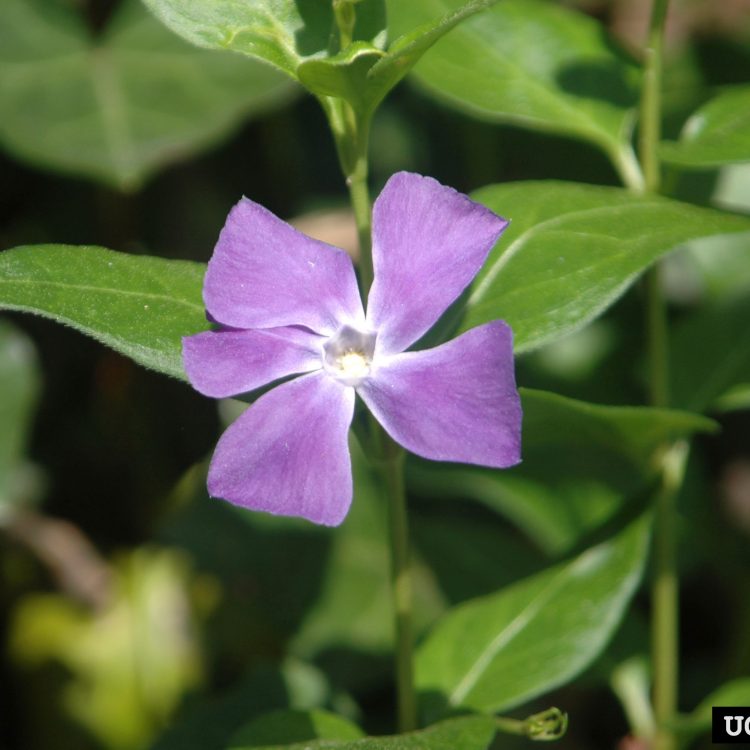
Large Periwinkle flower (Image: Chris Evans, Illinois Wildlife Action Plan, Bugwood.org)
Periwinkle can be easily identified by several distinctive features:
- Pale blue to lavender flowers that are 3 cm wide. Each flower consists of 5 pinwheel-style petals.
- Shiny, dark green leaves that are 3 – 9 cm long. The leaves grow in opposite pairs.
- Evergreen stems that branch out to form a trailing ground cover. The stems contain a milky latex.
Is common periwinkle really that invasive? Some people say the climate is too cold for it to spread in Whistler – is that true?
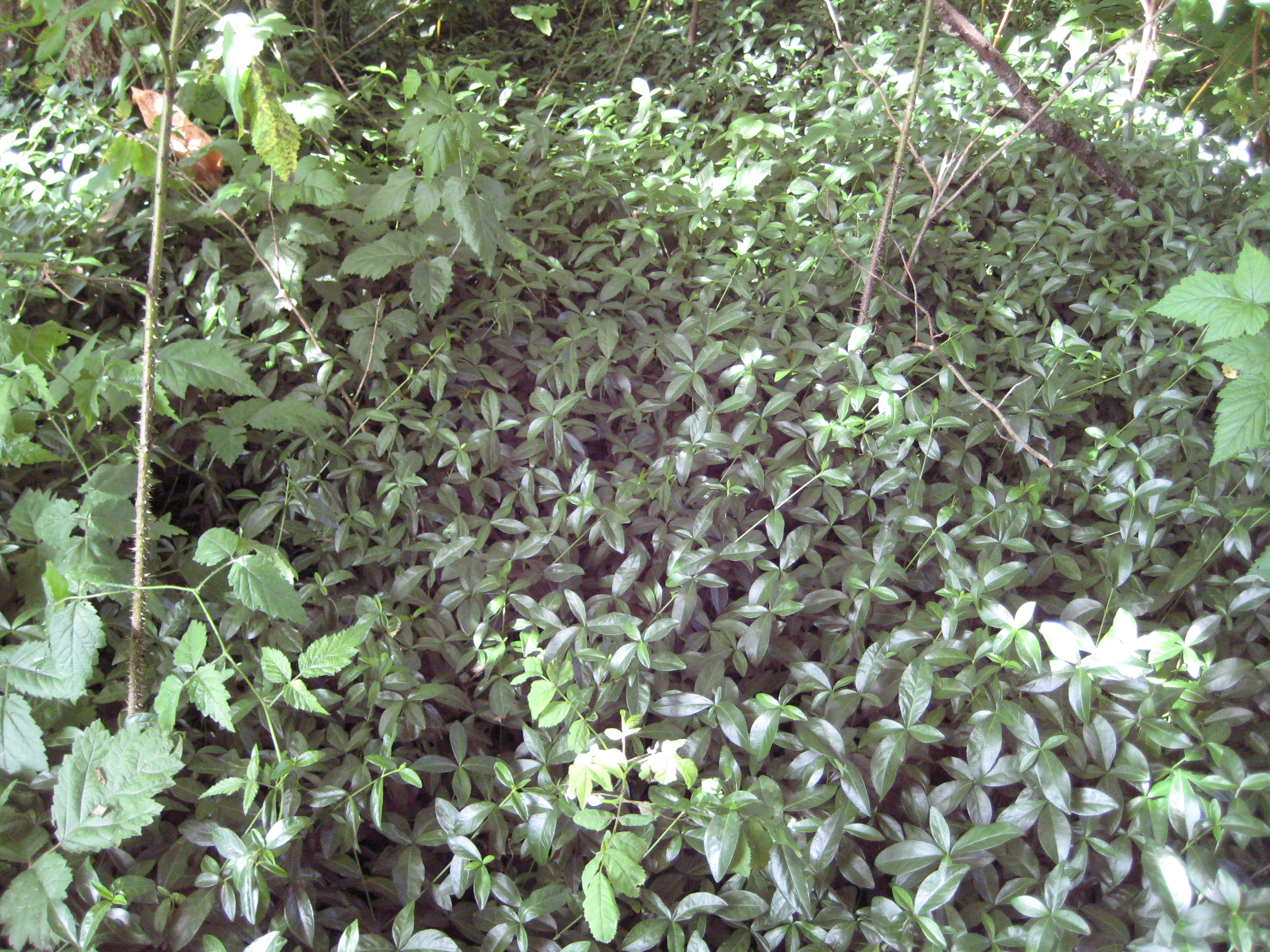
That’s great if common periwinkle hasn’t caused any problems for some gardeners, however, in the right conditions, this plant can thrive and form a monoculture – even in the colder areas of the Sea to Sky. It is a shade-tolerant species that has escaped gardens in the region and is already impacting forested areas across the south coast of BC.
Furthermore, climate change may exacerbate the effects of common periwinkle and other invasive species in the Sea to Sky region by creating a more favourable growing environment for them. While cold winters may restrict the growth of some invasive species, this isn’t always a guarantee for the future.
Why is common periwinkle such a concern in the Sea to Sky?
Common periwinkle grows rapidly through its stems and stolons (underground stems), which allows it to spread quickly and aggressively. It produces biochemicals that prevent the germination and growth of other plant species, which also adds to its competitive advantage.
Left unchecked, common periwinkle forms dense mats along the forest floor. This discourages the growth of native plants and reduces the amount of forage available to wildlife. Finally, it can also cause erosion when grown on riverbanks because it displaces native, deeper-rooted plants.



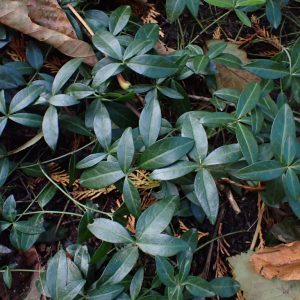
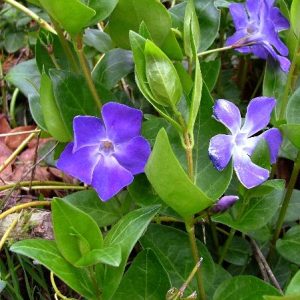
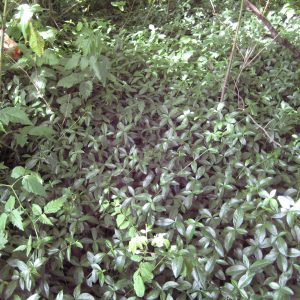
Add Comment